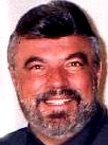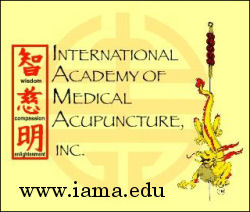Acupuncture & TCM Articles

Acupuncture Articles
by John A. Amaro L.Ac., Dipl.Ac.(NCCAOM), DC
 Dr. Amaro is an internationally known author, lecturer and practitioner beginning his practice of Acupuncture and Chiropractic in 1971. He has led 13 diplomatic Acupuncture study tours of The People's Republic of China escorting more than 500 doctors and practitioners. He has personally studied Acupuncture in nine separate Asian nations. Dr. Amaro is an internationally known author, lecturer and practitioner beginning his practice of Acupuncture and Chiropractic in 1971. He has led 13 diplomatic Acupuncture study tours of The People's Republic of China escorting more than 500 doctors and practitioners. He has personally studied Acupuncture in nine separate Asian nations.
He has received Certification in Acupuncture through the Columbia Institute of Chiropractic in 1973. This was one of the first Acupuncture postgraduate education programs for physicians in North America commencing in 1972.
He has been certified by the Waseda Acupuncture College in Tokyo, Japan in 1974 and graduated from the Chinese Medical Institute, Kowloon, China in 1976. He had previously taken postgraduate studies at the Tai Chung Medical School Taipei, China 1973.
The Most Notable Secret
John A. Amaro L.Ac., Dipl.Ac.(NCCAOM), DC
One of the primary reasons why a patient seeks the services of a physician is for the treatment of pain. However, malaise, lethargy and just plain lack of energy accounts for a very high percentage of patients seeing their doctor. Most certainly, it is a factor to be reckoned with in the majority of our patients.
It has been said by various researchers that the pain of cancer, renal colic, tic douleureux, postherpatic neuralgia, and childbirth rank among the top five pains that one can experience.
I find it so interesting that millions of women who are to have their delivery through natural methods, will spend considerable time to learn proper breathing techniques through Lamaze or other similar methods.
Given that proper breathing assists greatly in reducing the pain of childbirth, just think what proper breathing could do for moderate pain such as sciatica, lumbalgia, epicondylitis, or in fact, any pain.
Think about your own breathing for a moment. Unless you are one of the fraction of a thousandth of one percent of the population who is aware of their breath, it is possible you have not thought of your breathing in years.
I further find it interesting, that breathing is an autonomic response. However, it can be consciously controlled. We can alter the rate and intensity at will and in fact do during times of need. Exercise is a prime example of a time when we consciously alter our breathing. Anyone who lifts weights knows of the extreme importance of conscious breathing. In fact, every exercise relies heavily on the proper utilization of breathing.
Anyone who has ever experienced anger, anxiety or fear knows very well the best advice is to "take a deep breath and relax." We are all aware that taking a deep breath will assist in relaxing the nervous system.
If deep breathing is so vitally important in virtually every exercise, athletic endeavor and emotion, why then does 99.9 percent of the population breathe to the very top reaches of the lung during a normal and usual day?
Anyone who has ever jogged knows of the "high" one experiences when endorphins and enkephalins are released through the exercise process. Are these endorphins and enkephalins released through the simple movement of the joints and muscles, or is it because breathing has been altered requiring us to breath deeply? The answer is obvious.
Since endorphin and enkephalin release plays a critical role in relieving pain, does it not make sense for the sedentary patient to simply increase their rate and depth of breathing at very least four or five times a day for at least four or five minutes. To do so will play a major role in helping to alleviate pain and to provide a sense of well being.
I often wondered why a child who suffers a minor injury will cry whereby his adult counterpoint suffering the same discomfort will not. Could it be because in order to cry one must breathe? Is this innate's way of helping the child to deal with pain? What about the adult who suffers extreme pain or emotional upheaval? Crying is an accepted "emotion" even though most will apologize for their "weakness."
It is highly unlikely our average patient will ever become involved with yoga or martial arts, where much focus is placed on breathing. Therefore it is up to us to at least advise patients of the more elementary styles of breathing.
The most basic technique utilized for balancing the meridian pathways, the endocrine system, the immune system, and the emotions is simply long, deep, rhythmical breathing. Any patient with pain should use this breathing technique a minimum of four times a day for at least five minutes.
The technique known as breath of fire strengthens the nervous system, vitalizes the blood and expands the electromagnetic field. Breath of fire consists of short rapid breathing through the nose (one breath per second) concentrating on exhaling rather than inhaling. This technique charges the body with immediate energy. This is the way we naturally breathe when we try to "catch our breath."
To expound on this important subject would no doubt take an entire issue of Dynamic Chiropractic. But suffice it to say not only will our patients benefit tremendously by proper breathing, the benefit we as practitioners will receive just by being aware of our own breathing several times a day will no doubt have an effect on our healing capacities, which may surpass most academic approaches we can employ.
Remember, full inhalation to maximum must be countered with full exhalation before inhalation occurs again.
Suggest this to all of your patients with pain or altered energy along with your usual techniques. Breathing is no doubt one of the most notable secrets.
| 